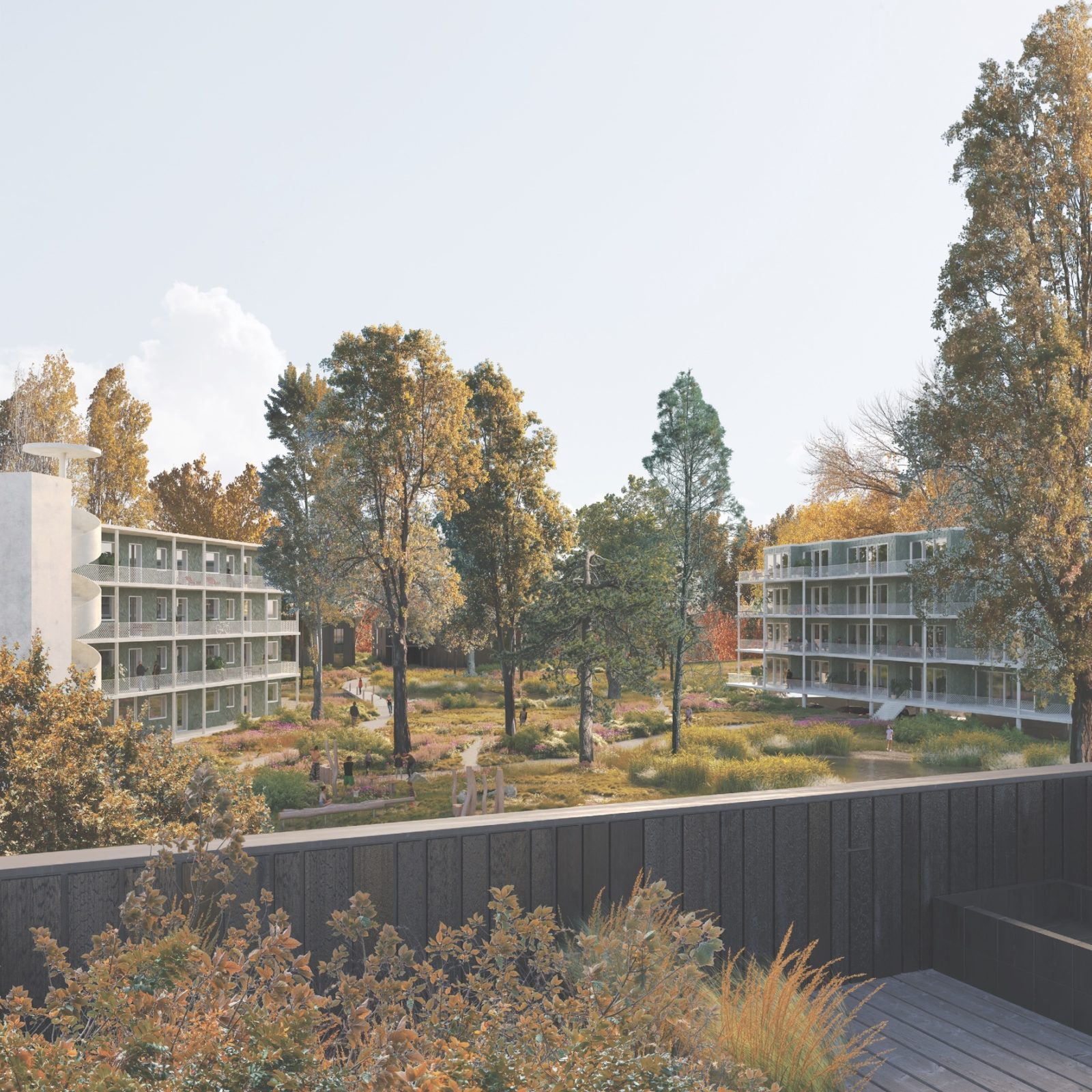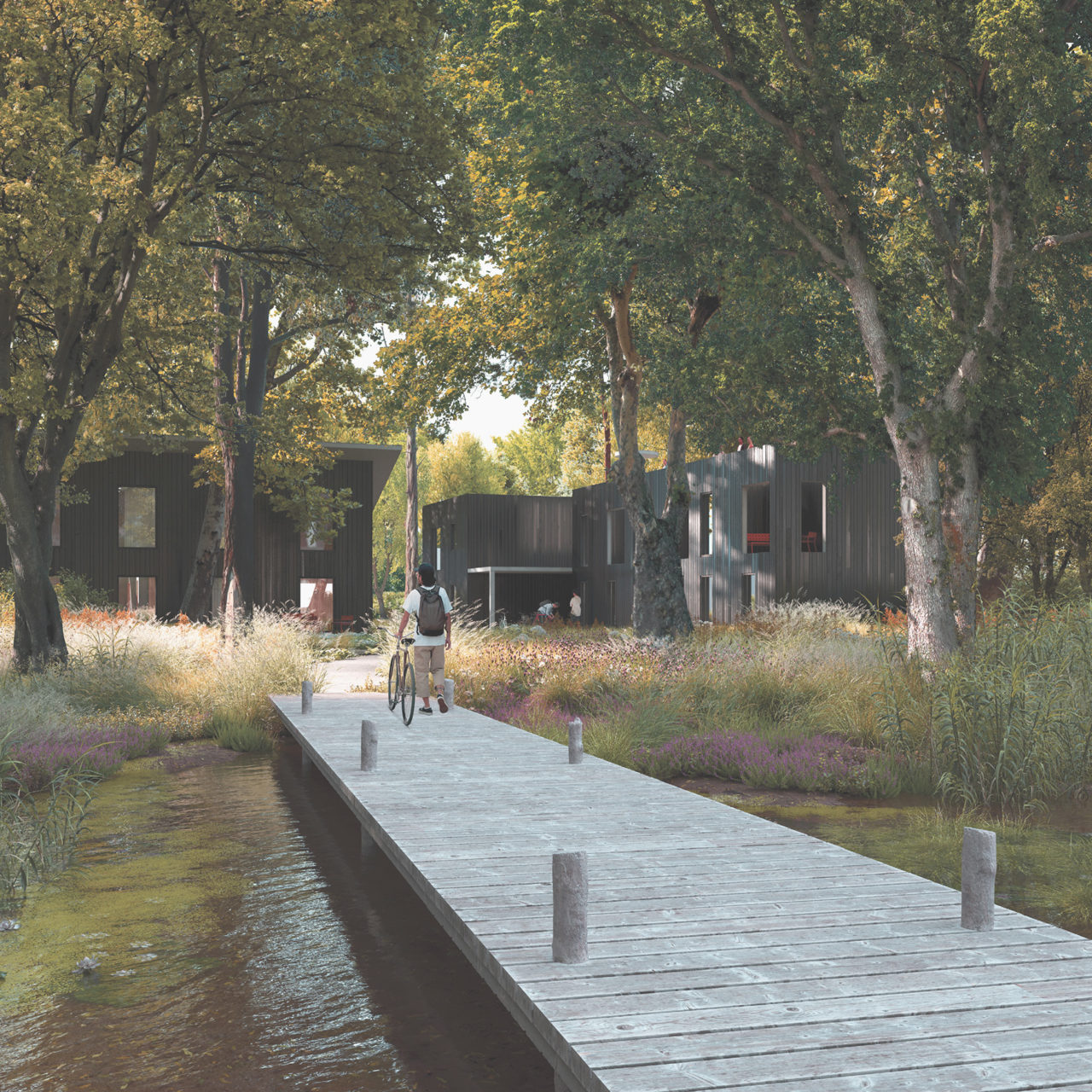Genk Oude Hoeve

Genk Oude Hoeve is situated within one of the last fragments of forested landscape in Flanders that has not become a suburban development or been parcelled out in a larger, fragmented green area. The project aims to combine the advantages of the site for a residential development (proximity to amenities, campus and city) with the possibility of preserving the forested context to its maximum. Through typological research, ORG developed an affordable, collective housing design with minimal impact on the existing biodiverse ecosystem. The masterplan and architectural design are highly sustainable in terms of methods, energy-efficient infrastructure but also green mobility.
Integrated Nature
The masterplan prioritizes the rejuvenation of the surrounding forest by introducing biodiversity, including specific species of natives shrubs and trees, and identifying zones within the site that require protection. This ensures minimal impact on ecologically valuable zones, safeguarding their integrity and significantly contributing to the ecological balance of the site. The existing vegetation is enhanced with new plantings of natural trees and trees with high ornamental value used to the maximum to subtly shape the gradual transition from public to private.
Instead of introducing new spatial logics such as courtyards or residential areas, ORG’s design proposal is fully guided by the existing spatial structures when looking for the best position, scale and form of the new buildings. In doing so, we make optimal use of the spatial absorbing capacity of the forest.
Sustainability
Sustainable and circular materials are utilized across the site, such as a timber frame which reduces the weight of the foundation, reused wood and wood burning techniques for facades, and innovative materials such as CO2-negative bricks by Vandersanden. The masterplan also provides a green mobility infrastructure system which integrates the site with the surrounding area while prioritizing bikes and carsharing.


Collectivity
Instead of introducing a unified urban design model such as a courtyard or residential yard on the site, the implantation plan starts from the outlined boundary conditions and converts them into a counter map. This translates into an open central zone and dense peripheral zones which allow for a different type of planting, construction and use. The central zone corresponds to the least ecologically valuable part of the site but by designing it as an open prairie landscape, it enables the integration of large multi-family houses; while preserving all existing ecologically valuable zones. This central zone is the backdrop of the collective concept of Genk Ouede Hoeve, that divides over 3 levels: the neighborhood, the project and the individual homes.
Within the project this translates into the provision of collective indoor and outdoor spaces spread across the different clusters and into the design of gradual transitions from public to private. For the individual homes on ground-level, the collective areas are always conceived as outdoor spaces. These can be filled in as communal bike sheds, large terraces, vegetable gardens. ORG opted to suggest the use of these spaces, but not to design them in detail for future residents to be able to design them according to their own wishes and needs.
Location
Genk, Belgium
Year
2022-2023
Team
Jelle Potters, Jan Vanduffel, Johan van den Berg
Clients
Uniqwonen, Som Projects
Size
8000 m²
Program
Residential, Landscape
Collaborators
Drieskens & Dubois, BURO Landschap




